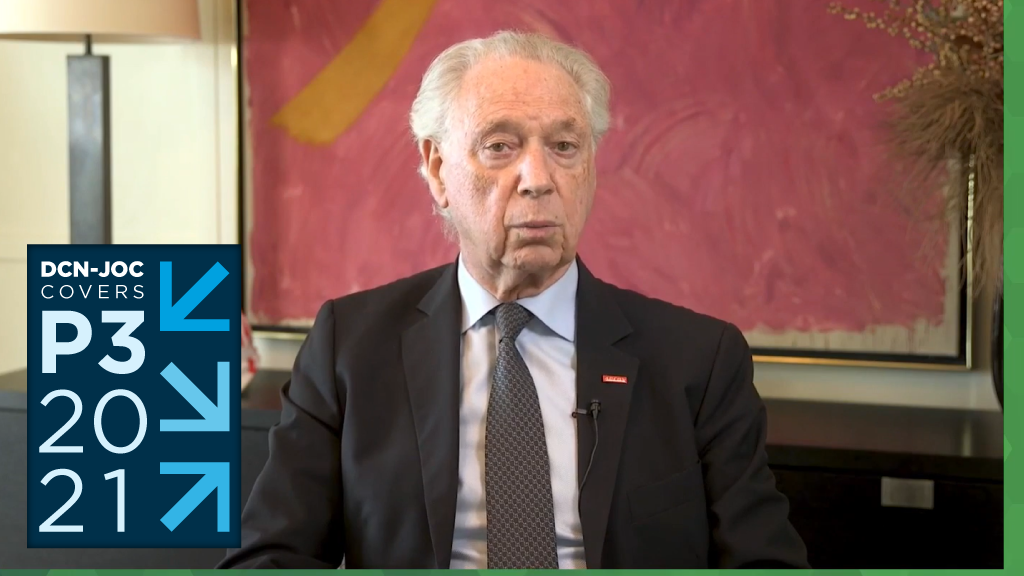P3 pioneer John Beck, founder and chairman of Aecon Group, still believes in the power of public-private partnerships decades after he first became an advocate and practitioner, but today he says the construction sector must embrace significant change in the procurement model.
Beck delivered the keynote address on day two of the annual CCPPP Conference Nov. 17, presented via livestream by the Canadian Council for Public-Private Partnerships.
The driving force behind one of the world’s first P3 projects, Ontario’s Highway 407, Beck was a co-founder of the CCPPP.
“The P3 model was fundamentally created to meet the challenge of a generational infrastructure gap,” said Beck. “We must now continue to rise to that challenge of building the infrastructure of the future.
“I want to be very clear. The fundamentals of the P3 model continue to work well, but not in all instances and not for all projects. As I also say, don’t kill the model, just adjust the risk transfer.”
Major linear projects are larger and more complex now with more risks than ever if undertaken under traditional procurement models, Beck explained. Those risks are typically placed on builders, even though in many instances they’re not in the best position to control the risk and therefore a more balanced distribution of risk is required.
“When these risks are misallocated, they often result in disputes, many of which are only solved following costly and lengthy arbitration, both during and following the completion of a project. This process is not good for anyone and it subjects builders and other parties to long delays before resolution, which can have a significant financial impact.”
Being forced to carry that financial risk has resulted in several companies choosing to forego participating in an increasingly long list of projects, leaving a shrinking number of available players, Beck noted.
“I think we’re at the point where everyone from project owners to designers, builders, contractors and subcontractors all recognize the need for continuous improvements and evolution of the processes and or the models,” he said. “If we can agree on the path forward, I believe everyone will come out ahead.”
And so Beck has become a big supporter of the progressive design-build model, he explained, saying it reflects many of the generational changes inherent in current projects.
In that model, Beck said, sponsor managers are set up with the designer and builder together from the outset, providing project recommendations to improve constructability, schedule and budget. If adjustments are required due to risk or scope, they can addressed by the entire team, including an active owner, as part of collaborative problem solving.
Under the progressive model, with wholesale collaboration, the design development phase can constitute up to 40 to 60 per cent of the project.
“The typical result is a project completed faster, at a lower price, and with optimized quality,” said Beck. “This model rewards innovation and outcomes rather than fixed inputs. Success is dependent on each party being as committed to achieving the ultimate goals as they were to their own goals.”
Beck spoke approvingly about Infrastructure Ontario’s recent innovation in procurement for transit and other projects. IO launched the request for qualifications for the Scarborough subway extension project including stations, rail and systems using a progressive design-build approach precisely to address considerable contract risk prior to signing a final contract, he noted. And the Alliance model was used for the Union Station enhancement project.
By rethinking the risk transfer in its projects, Beck suggested, IO would attract more bidders.
Another area ripe for reform is in contractual penalties, Beck said. The P3 model usually focuses on penalties for poor performance, but not rewards for improved performance. Sustainability and innovation are examples of where performance should be rewarded.
“I think it’s important we stop solely dealing with problems and start looking at ways to encourage success as well,” said Beck.
The best way to accomplish collective goals is to establish mechanisms that allow all parties to collectively win, Beck said.
“I really believe in win-win situations. This is, in fact, one of the fundamental values of P3 projects.”
Follow the author on Twitter @DonWall_DCN.











Recent Comments
comments for this post are closed